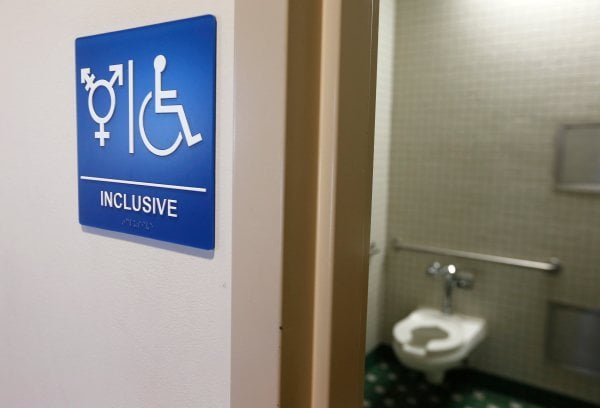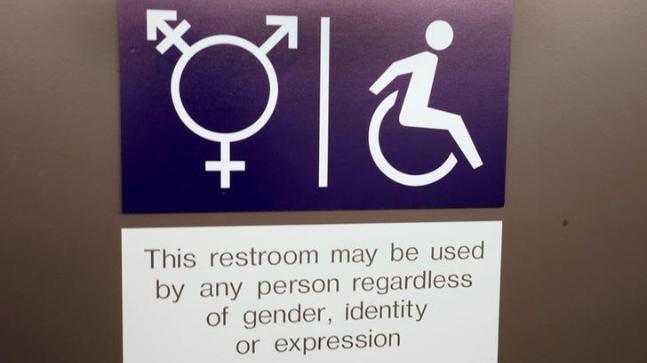Dormitories of most undergraduate residential colleges around the world are typically segregated on the basis of biological sex. Such gender-based segregation is neglectful towards those who possess non-normative identities such as Trans, non-binary, Queer, etc. In 2015, a circular was issued to the Vice Chancellors of all Indian Universities in the hope that adequate steps would be taken to install Trans-friendly infrastructure in universities. Despite this, undergraduate residential colleges in India still remain sex-segregated (i.e. either male or female dorms). Therefore, gender neutral spaces such as residences and washrooms warrant adequate research in terms of feasibility and necessity, in hope that such results may benefit not just the LGBTQ+ community but students at large.

Despite the dearth in literature on genderneutral spaces in India, the Tata Institute of Social Sciences (TISS) is the first undergraduate residential college in India to effectively implement a gender neutral floor as part of their women’s residence. In light of this, the current study wishes to contribute to this dialogue by assessing the perceptions of students from a liberal arts university, namely Ashoka University. In the month of December 2018, Ashoka University introduced gender-neutral washrooms to provide safer spaces to the LGBTQ community. However, there was little research done following the implementation of such washrooms. Therefore, the current research includes a segment which seeks to gauge the reactions to these gender-neutral washrooms.
Gender Neutral Residences
Semi-structured interviews were conducted on 3 undergraduate students enrolled at Ashoka University. The sample was limited to 3 students in order to receive depth rather than to establish generalizability.
For those who do not identify as either a man or a woman, the gender binary is a constant reminder that their gender identity is deviant, and is hence not accepted in society. Gender-segregated spaces such as washrooms and residences are exclusionary towards those who do not fall under this binary.
- A space rid of gender
All participants unequivocally agreed that it would be a good idea to have a gender neutral residence at Ashoka University. Why is the gender binary consider “restrictive”? “Binary” implies either one or the other: in this case, either man or woman. For those who do not identify as either a man or a woman, the gender binary is a constant reminder that their gender identity is deviant, and is hence not accepted in society. Gender-segregated spaces such as washrooms and residences are exclusionary towards those who do not fall under this binary. A gender neutral residence is therefore, a space that is devoid of gender: it is merely a space where one can exist without having to worry about “fitting in” or not.
- A space with more gender
Sex-segregated residences maintain a certain distance between the two sexes. This distance eventually leads to a feeling of unfamiliarity with the other sex, and may give rise to stereotypes. Arya, a student here, reports feeling a sense of discomfort when visiting the men’s residence, but also realizes that this discomfort was felt partly due to a general sense of unfamiliarity with men. They say, “For me at least, it’s because of this interaction with people of other genders, people of the opposite sex, that I got more comfortable talking or interacting with men…” If discomfort were to arise due to unfamiliarity, a possible solution would be to directly interact with the members of this “out-group”. A gender neutral residence could open up the possibility of interacting with people of multiple sexes. This increase in interaction will then ensure that such harmful stereotypes held about groups are unlearned.
However, participants were also aware of the barriers to such residences. Arya says, “I think even on this campus, people will SAY that they support gender neutral residences but when it comes to living in one, a lot of people would hesitate…..I suppose because of discomfort.” To address this concern, there needs to be more research done on this feeling of “discomfort”.
Also read: 10 Things You Shouldn’t Ask A Transgender Man
Gender Neutral Washrooms
Prior to the setting up of gender neutral washrooms, the bathroom on the left was designated to women while the one on the right was exclusively for men. In the month of December 2018, the signs “men’s” and “women’s” were removed from both washrooms and were subsequently replaced with “gender neutral”. Therefore, students who were already enrolled at Ashoka University before December would have knowledge of how these washrooms were initially segregated, and could continue to segregate themselves on the basis of gender regardless of the changes in signage.
If a previously-gendered space is to be converted into a gender neutral one, deliberate efforts must be taken to rid that space of its gender. This can be done both psychologically as well as infrastructurally. Psychologically, associations between objects and genders, for e.g. associating urinals with “cis-men”, are harmful associations which need to be unlearned.
As one looks inside the washrooms, one notices that the washroom on the right has urinals, while the washroom on the left does not. Therefore, the frequent usage of these washroom amongst men could be explained by the existence of these urinals. If a previously-gendered space is to be converted into a gender-neutral one, deliberate efforts must be taken to rid that space of its gender. This can be done both psychologically as well as infrastructurally. Psychologically, associations between objects and genders, for e.g. associating urinals with “cis-men”, are harmful associations which need to be unlearned. It is not always the case that only cis-men use urinals; a Transwoman could feel the need to use urinals but might feel compelled to use the other washroom if they view the urinals as contributing to a toxically masculine space. Infrastructurally, changes such as installing urinals across all gender neutral washrooms need to be implemented to increase access to such facilities.

The participants have, however, noticed moments of friction which arise within these washrooms. Sensitization workshops could further aid this process of normalization by educating people on how to react to such situations. Shreya says, “I think…everyone including the student body…professors or admin itself should have to go through like sensitization workshops because its important especially when…creating a safe space…you can’t just create the physical space, right? You have to create the actual environment as well and that includes the people…” She believes that ultimately it is people’s attitudes which contribute towards creating a safe environment. To foster such attitudes, it is imperative that these workshops be held regularly for all members of all universities across India.
Conclusion
In conclusion, the step towards creating gender neutral spaces is to constantly engage with the community benefitting from such spaces by way of sensitization workshops and awareness drives. This is not to say that everyone should ideally feel comfortable in a gender neutral space; this implies looking deeper into the factors which cause such discomfort and assessing whether people across genders can co-exist without feeling unsafe. Further, our attitudes tend to mirror the physical structures around us; adequate infrastructural changes will go a long way in our efforts to be inclusive towards marginalized communities.
Also read: World Toilet Day: Why Are Toilets A Feminist Concern?
References
“We Don’t Need No Segregation.” by Tara M. Rai
“At TISS, India’s First Gender-Neutral Hostel: ‘All Students Can Come, Chill’.” by Priyanka Sahoo
*Names have been changed for the purpose of anonymity.
Rasika Gopalakrishnan is currently pursuing her PG Diploma from Ashoka University. Her academic interests include social psychology and qualitative research. When she isn’t busy playing Ultimate Frisbee, she’s striking conversations with people in hopes of changing their heteronormative views. You can find her on Facebook, Instagram, Twitter and LinkedIn.
Featured Image Source: India Today





Sex-segregated spaces are necessary because of the widespread male violence against women and nowadays, the prevalence of hidden camera porn. Stop throwing women under the bus to validate men’s “gender identities”. Let them have separate spaces.